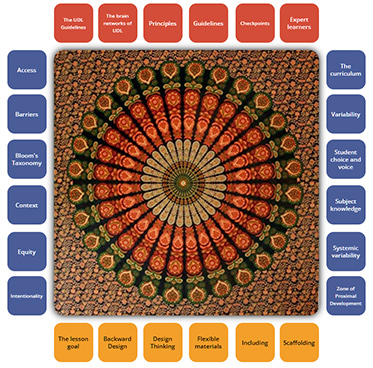UDL: Seeing the Full Tapestry
When I was little, I was encouraged to see how pieces and parts combined to become a thing and how to make that thing better. I got to disassemble and reassemble things like toys, blenders, lawn mowers and theater costumes all in the quest for improvement. That desire to understand how something is made and discovering how to make it better drives my continued pursuit of understanding and sharing Universal Design for Learning (UDL).
UDL is a tremendous framework that grew out of existing constructs, concepts, processes, and practices. From there, the principles, guidelines, and checkpoints emerged resulting in the UDL Guidelines. Many educators come to UDL by learning about the Guidelines, but they don’t always see the different parts of the framework and how they interconnect. Without that knowledge, their own connection to UDL isn’t as strong as it could be. To make that connection stronger, I set out to share what pieces are interwoven and currently viewed as integral to the framework.
We are in an exciting period where some people are discovering UDL for the first time while others are deepening their UDL connection and revising the guidelines with an eye on equity. Using the analogy of threads that create a tapestry, my hope is that this infographic (also offered as an EPUB) will generate conversation across that continuum about what threads weave together to create the framework, what’s missing, and how we can help everyone grow in their understanding and application of UDL.

